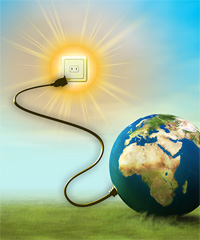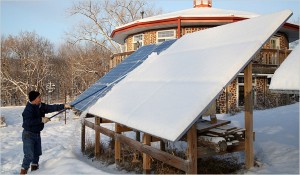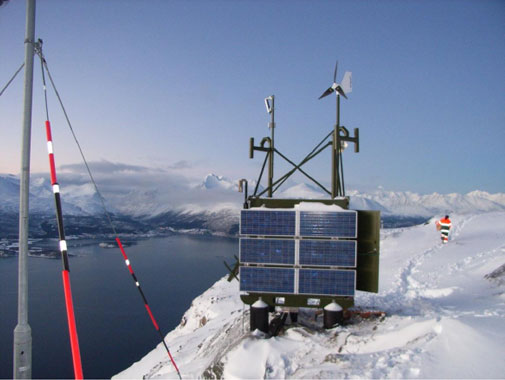| PHYSICS OF SOLAR CELLS |
Benefits

http://www.buildsolar.net
The silicon used for most
photovoltaic cell (solar cells) is a very abundant resource and can be
easily acquired. Solar cells are reliable and easy to maintain. They
have no moving parts, which allows for easy visual checks and servicing
to keep
systems maintained. Solar panels are engineered for harsh weathering,
they can withstand hail impact, high wind, and freeze-thaw
temperatures.  They
can
produce
power
in
all
types of weather. On partly cloudy days, they can produce up to 75%
of their potential energy. On extremely clouded days, they can still
produce about 25% or their maximum output.
They
can
produce
power
in
all
types of weather. On partly cloudy days, they can produce up to 75%
of their potential energy. On extremely clouded days, they can still
produce about 25% or their maximum output.
 They
can
produce
power
in
all
types of weather. On partly cloudy days, they can produce up to 75%
of their potential energy. On extremely clouded days, they can still
produce about 25% or their maximum output.
They
can
produce
power
in
all
types of weather. On partly cloudy days, they can produce up to 75%
of their potential energy. On extremely clouded days, they can still
produce about 25% or their maximum output. Solar cells strengthen our economy and reduce our dependence of importing fossil fuels. Using PV cells allow us to generate our own "home-grown" energy within our country. This stimulates domestic jobs, while stimulating future solar cell exports.
Solar cells have virtually no environmental impact. PV cells create clean energy, producing no atmospheric emissions or greenhouse gases that are harmful to the earth. http://makesolarpanelseasy.com
Photovoltaic cells are versatile and flexible in terms of size and applications. Solar cells can be built to any size depending on energy demands. They can be easily modified or transported. Solar cells are a good choice in remote locations where power lines are unavailable or are too costly.


http://www.solarwindenergys.com
http://www.defence-industries.com
|
Designed by Elliot Smith